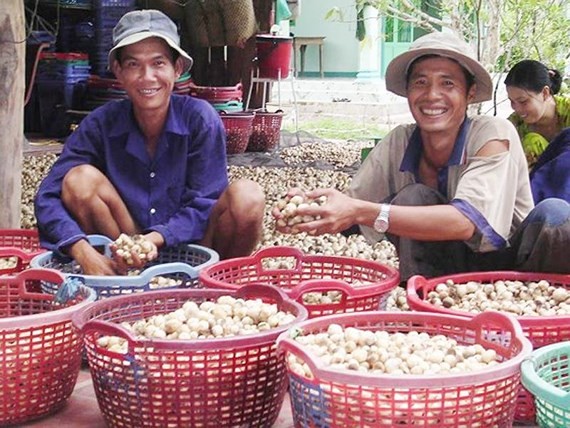
Mushroom cultivation has developed in southern provinces generating good profit for farmers.
According to the National Agricultural Extension Center, the Mekong delta region and the southeast provinces have great potential for year-round culture of medicinal mushroom and eating mushroom thanks to favorable weather and agricultural residues.
Additionally, Vietnamese farmers basically grasp mushroom breeding techniques and cultivation of straw mushroom, fungus, button mushroom, and oyster mushroom and the consumption market of mushroom has been expanded gradually.
For sustainable development of mushroom culture, farmers have exchanged new technologies in culturing mushroom such as using agricultural residues as fertilizer in growing mushroom with focus on renovating technologies and planting organic mushroom for local demand and exports.
Acting director of the Extension Center Tran Van Khoi said that mushroom cultivation has developed in southern provinces generating good profit for farmers. Currently, farmers can cultivate 16 kinds of mushrooms with annual mushroom output of 250,000 tons earning US$ 25 - 30 million from exports.
Noticeably, exports of oyster mushroom earn $2,600 per ton relatively higher than other agricultural products regardless of mushroom cultivation helping to treat a large quantity of agricultural residues and offering employment for locals, Mr. Khoi said.
He added farmers should apply technologies more to strengthen production of high quality mushroom.
























